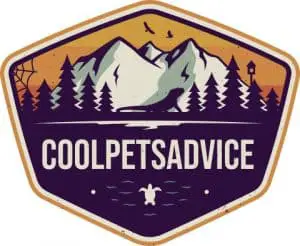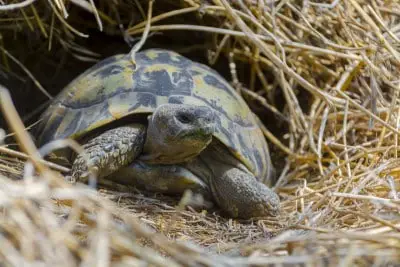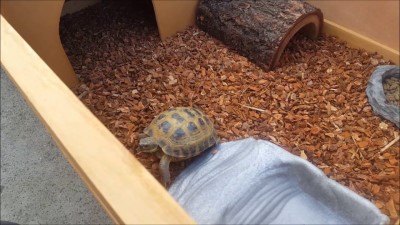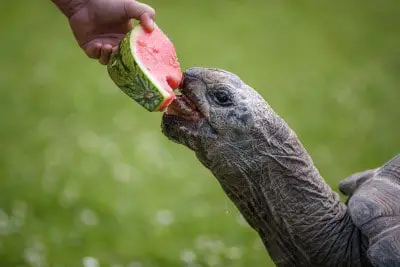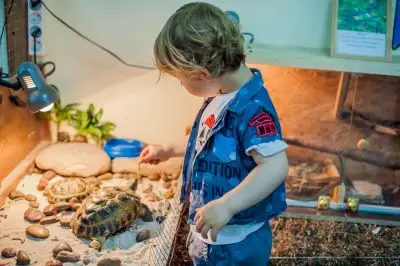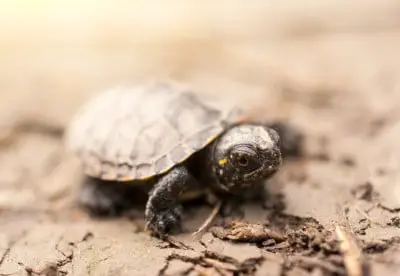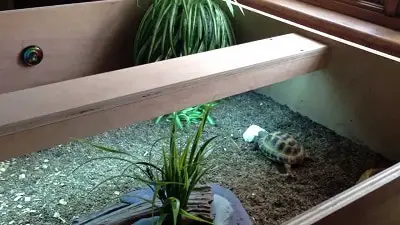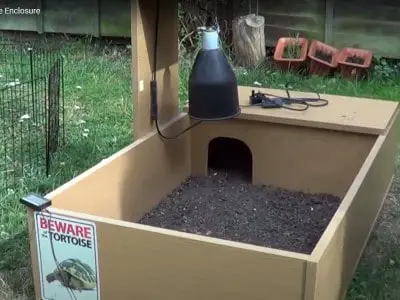Tortoises are cute pets, and most people opt to keep one or two tortoises in their homes. When you take that tortoise home, it becomes your responsibility to take care of it. There are numerous guidelines on the internet on how to take care of your tortoise, and some of them will include items that your tortoise needs.
Before taking a tortoise home, there are several things you need to have to make the experiment easier. Some you can get from the pet store, while others might have to build yourself or buy from other stores. Some items are a must-have, and if you fail to get them, their absence could jeopardize your tortoise’s health.
Keep reading to find out more about the accessories you will need to take care of your tortoise.
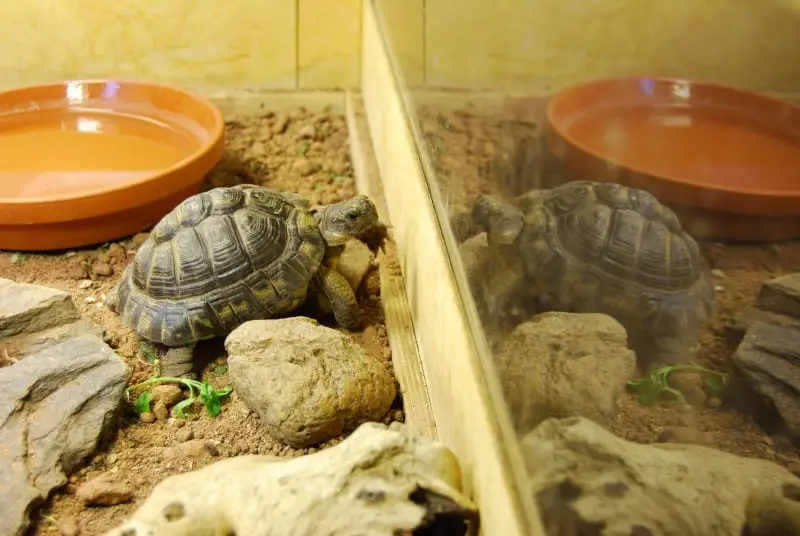
Must-Have Tortoise Accessories
Tortoises are wonderful pets that, if taken care of properly, can live for a long time. However, taking care of tortoises will not be an easy journey. A few mistakes along the way and your tortoise will develop serious health complications. These are some of the items that you must have to take care of a tortoise.
1. Housing
The most important tortoise accessory is its housing. An indoor enclosure for a tortoise is usually known as a tortoise table. The tortoise is slow, but it is important to provide it with a safe place to stay.
You cannot let your tortoise roam in your house or your backyard. You have to choose the most suitable tortoise table for your tortoise. The enclosure should be large enough for your tortoise to move around and escape-proof.

You can place the tortoise table in a sunny area in your garden or close to your house to provide your tortoise with natural UV rays from the sun. If you decide to get an outdoor tortoise table, make sure it is all weatherproof and strong enough to keep away predators.
Read our full article on Best Tortoise Enclosures.
2. Thermometer
Tortoises are cold-blooded animals meaning they cannot generate their body heat. You need to monitor the temperature in their enclosure and make adjustments accordingly. You can choose between an analog thermometer and a digital thermometer.
The best thermometer for your tortoise is a digital thermometer. It is easy to read and gives an exact figure. You can install two digital thermometers on each end of the tortoise table to measure the cold and hot temperatures.

If you have some money to spend, you can get an advanced one that sends information to your smartphone whenever you are not around. You can also adjust the temperature in the enclosure directly from your smartphone.
3. Substrate
Many people forget to keep enough substrate in their tortoise’s enclosure. A tortoise will dig holes into the ground in the wild to escape the heat and predators and also build a nest to lay eggs. If you do not put enough substrate in the enclosure, your tortoise will not have something to dig into.
They may be living in your house where they are no predators, but they still have their natural instincts and will try to dig holes. If you keep a male and female tortoise, the female will need enough substrate to build a nest to lay her eggs. The best substrates for a tortoise include coconut coir, organic soil, and peat moss.

Read our full review on Best Bedding Substrates for Tortoises.
4. Water Dish or Water Bowl
Tortoises drink water, and they need a regular supply of fresh and clean water to avoid dehydration. Tortoises, much like other reptiles, can go for a long time without drinking water. However, the more they go without water, the weaker they become and could develop health complications such as kidney disease.
To keep your tortoise well hydrated, keep a water bowl with clean water in its habitat. You should also regularly replace the water in the bowl to avoid creating a breeding ground for bacteria and other disease-causing pathogens.

Read our full review on Best Tortoise Water Dishes & Bowls.
5. Misting Equipment
Misting is important for your tortoise; it helps reduce the amount of water lost from the body and is a way of improving the humidity in the tortoise table.
You can use a simple spray bottle to mist your tortoise. Fill it up with clean water and spray your tortoise once every day. Some substrates hold water longer than others, check your tortoise humidity preferences and select the appropriate substrate. If your tortoise requires less humidity, do not put it in the substrate that retains water for too long.
If you do not have time to mist your tortoise each day, you can install an automatic misting system. An automatic misting system usually has a timer you can set, and the equipment will mist the tortoise at the time you set it.

6. UVB Lighting
UVB lighting is a crucial item when taking care of a tortoise. Tortoise needs UVB rays to help their bodies absorb calcium and is a good source of vitamin D.
In the wild, the tortoise usually basks in the sun and obtain natural UVB rays from the sunlight. When you keep a tortoise indoors, it will not get any sufficient UVB rays. If your tortoise does not get sufficient sunlight, it will develop the metabolic bone disease.
You will have to install an artificial source of UVB rays in your tortoise’s enclosure. There are numerous choices of UVB lighting for a tortoise table like UVB bulbs, UVB fluorescent lights, mercury vapor bulbs. You can install a fluorescent strip light, looks like a regular fluorescent bulb, but it can produce UVB rays. Mercury bulbs tend to last longer and can also produce heat, but they are very expensive.

7. Basking Lights
There is a difference between basking lights and UVB lights. Basking lights provide the heat necessary for warming the tortoise’s body, while UVB lights provide the artificial UVB rays.
Since tortoises cannot produce their body heat, they require an outside heat source to warm up their bodies. In the wild, the tortoise will bask in the sun for a few hours to warm their bodies and will retreat in the shades to cool off.
Taking your tortoise outside each day to bask can be tiresome. You should install a basking light on the tortoise table and avoid numerous trips in and out of the house.
There should be a thermal gradient in the enclosure, one hot side and another cold side, to avoid your tortoise sustaining burns. Once the tortoise is done basking in the light, it can move to the enclosure’s cold side to lower its body temperature. Any incandescent bulb can work as a heat source or install heat lamps or use mercury vapor bulbs.

You can also use a heat mat to generate heat for your tortoise. Heats mats are popular with snake owners, but they can also work for a tortoise. A heat mat is installed underneath the tortoise table and heats the floor, providing warmth for the tortoise. You need to be careful using a heat mat.

Always use it with a thermostat because if they get too hot, the heat could kill your tortoise. Heat mats only raise the temperature of the floor, so it could be difficult to raise the temperature of the environment inside the enclosure in the winter.
8. Light Timers
Light timers are very important in creating a day-night cycle for your tortoise. A day-night cycle helps develop a routine where your tortoise knows when to wake up or go to sleep. A day should be 12 hours, and you can turn off the lights on your own, or you can install lights with a timer.

You can easily forget to turn the lights off or on, ruining the day-night routine. However, a timer will automatically turn on the lights for the day and turn them off once nighttime begins. Tortoises require total darkness when they sleep. Therefore you should not install lamps emitting red light and leave them on during the night.
9. Calcium Supplement
Calcium is a crucial nutrient that helps tortoises grow. The Tortoise needs calcium to grow a healthy skeleton and shell. Since tortoises eat many vegetables and fruits, you need to give them calcium supplements to ensure they avoid having health issues stemming from calcium deficiency.
If your tortoise does not get enough calcium, it will have a small shell and a large body, making it look too big for its shell. Several calcium supplements work best for tortoises.
- Cuttlefish bone
A cuttlefish bone is the best source of calcium for your tortoise. It is natural and does not contain any preservatives. Cuttlefish bone is made of pure calcium carbonate, which many experts agree is the best and safest way for a tortoise to ingest and metabolize calcium. The hard form of the cuttlefish bone also helps trim the tortoise’s beak, saving you the numerous trip to the vet.

- Tortoise Block
Tortoise block is another source of calcium for your tortoise. It is usually a block of calcium carbonate mixed with ground-up plant matter. In addition to supplying your tortoise with calcium, the tortoise block also contains other nutrients such as vitamins. Not all tortoises are fond of the tortoise block, and it may take some time before your tortoise starts to chew it.

- Calcium Powder
There are several brands of reptile calcium powder you can give to your tortoise. The most common calcium powder is the Zoo Med calcium powder.

However, you should use these calcium supplements sparingly. Too much calcium and vitamins can also cause health complications for your tortoise.
10. Vitamin Supplements
Vitamin supplements are also important to the health of your tortoise. Vitamin A is important for tortoises as it helps develop the eye membrane and is also crucial during reproduction and vitamin B helps regulate carbohydrate metabolism.
There are oral vitamin supplements you can give your tortoise or opt to give them a vitamin injection. Vitamin supplements ensure that your tortoise gets enough vitamins, some of which might be missing from its regular diet.

11. Books and Magazines
Tortoise might seem low maintenance pets, but the reality is that they require a lot of care. You need enough information about tortoises to make it easier for you to take good care of them.
The internet makes it easier to find information about tortoises, but it is good to read books and magazines about tortoises to refresh your mind. There are several books about taking care of tortoises. You can keep them in your living room for everyone to read.

Always check the publishing year, do not read books that were published ten or fifteen years ago.
12. Waste Remover
It is important to keep your tortoise’s enclosure clean. Tortoises are not messy animals; they do not poop that often but you still need to clean it up when they do.
An indoor tortoise table needs to be clean. Accumulation of poop can start a bad smell, and it is also a health hazard. You need a tool to clean up the poop whenever you spot them, and you can keep it close to the enclosure. You can use a garden trowel. Just make sure you do not put the latter back with other kitchen utensils.

Nice-To-Have Tortoise Accessories
Other than the above must-have items, you can also purchase more accessories to keep your tortoise comfortable and excited. Some of these items include;
1. Hygrometer
Humidity is important in keeping a healthy tortoise. It helps reduce dehydration and makes it easy for the tortoise to shed its skin.
To monitor the humidity levels in a tortoise table, you will need a hygrometer. A hygrometer will measure the amount of moisture in the air surrounding the tortoise table.

Most people assume when it comes to humidity levels in the enclosure of their tortoises. If you want to be sure of the humidity levels of your tortoise’s table, then you can buy a hygrometer.
Arid and semi-arid tortoises thrive in humidity levels between 45 and 55%, while tropical tortoises thrive in areas with humidity levels of 80%.
2. Tortoise Hide
Tortoises need to feel safe when they are in their enclosure. The enclosure is already secure, but a tortoise still needs a place to go if they are sacred. You can place a hide inside the tortoise table.
A hide is usually an item with a hole inside it which a tortoise can walk in and stay inside for some time. A hide can be made of wood, plastic, or skin. If the substrate in the enclosure is deep enough for a tortoise to dig a hole to hide, it is unnecessary to get the tortoise hide.

3. Plants
Tortoises are herbivores, and they will eat a variety of plant leaves and fruits in the wild. In captivity, you can also place some live plants in the enclosure.
However, do not grow the plants directly from the substrate, use pots or other containers. Your tortoise might not eat the plants, but their presence makes them feel like they are outside.
If you find it hard to grow the plants within the enclosure, you can acquire artificial plants for your tortoise. The main objective is to make your tortoise feel much more comfortable while in its enclosure.

Also, there are edible pot plants you can keep on the tortoise table; they are perfect if you have to leave for a while and you have no one to take care of the tortoise.
Read more: Best Plants for Tortoise Enclosures
4. Snacks and Treats
Just like other household pets, tortoises also enjoy snacks and treats. In addition to feeding your healthy tortoise food, you can give it a treat a few times a week.
One treat that a tortoise will enjoy is a cactus treat. These are dried pieces of cactus rich in calcium and fiber. They are easy to prepare. You only add water to the pieces of cactus and give them to your tortoise.

However, since they have preservatives, you should not give your tortoise too much. It could cause health complications in the future.
5. Decorations
You should not let your tortoise live in a dull enclosure. You can add a few decorations that can improve its look, especially if it is an indoor tortoise table.
You can place a few rocks or pieces of deadwood in the enclosure. In addition to making the enclosure look good, your tortoise will climb on them when basking. You can also buy a handmade plastic or wooden cave; it will improve the tortoise table’s look, and your tortoise will have fun hiding in it.
You can also add an image in the background. For example, you can take a picture of your tortoise and photoshop it in the background of its natural habitat. It can be a good conversation starter.

6. Toys
The tortoise does not just stay in their enclosure to eat and sleep. It is good for a tortoise to have some objects to interact with to stay healthy. Some people call these objects toys, while others call them enrichments. A toy can be anything from rocks to actual store-bought toys. These are toys you can get for your tortoise;
Read more about Do Pet Tortoises Need Toys.
- Bath Toys
A tortoise is not a good swimmer, but some of them enjoy getting a bath. If your tortoise enjoys getting a bath, you can add a rubber ducky or any other floating toy and watch them follow it around the tub. Playing will make bath time even more fun for you and the tortoise.

- Pebbles
Tortoise also enjoys playing with pebbles in their enclosure. They usually push them around with their head. Some will try and gather the pebbles in one spot, while others will push the pebbles in any direction.

However, this activity requires correct size pebbles. If you place bigger rocks in the enclosure, they will not play with them. The enclosure also needs to be big enough for the tortoise to push the pebbles around.
7. Basking Platform
A tortoise can bask from anywhere inside its enclosure where the basking light can reach it. But it is not a bad idea to set up a platform where your tortoise can bask.
You can place a platform close to the basking light where the tortoise can soak up the heat faster. Choose a basking platform that your tortoise can easily climb, and it can have steps or a ramp that is not too steep.

It should not be too high. This is to prevent your tortoise from flipping over when it falls. As you know, tortoises don’t like flipping over since they cannot help themselves back to their feet.
8. Incubators
Incubators are important if you are interested in breeding tortoises.
In the wild, a female tortoise will dig a hole in the ground, lay eggs in it and cover it with soil and leaves. This is because there needs to be the perfect temperature, correct humidity, and zero disturbance for the eggs to hatch.
If your tortoise lays its eggs in the enclosure, you can take them and place them in an incubator and wait for the hatchlings. There are several incubators you can buy but the most common and effective incubator is the Hova-Bator. Hova-Bator is an incubator for bird eggs, but most tortoise breeders have used it to great success for years.

Finally
A tortoise is a lifetime pet, and if you take good care of it, the tortoise can outlive you. Use this article to obtain the necessary items to take care of your tortoise. The list is not exhaustive, and if you think other items could make your tortoise’s life better, you should get them.
